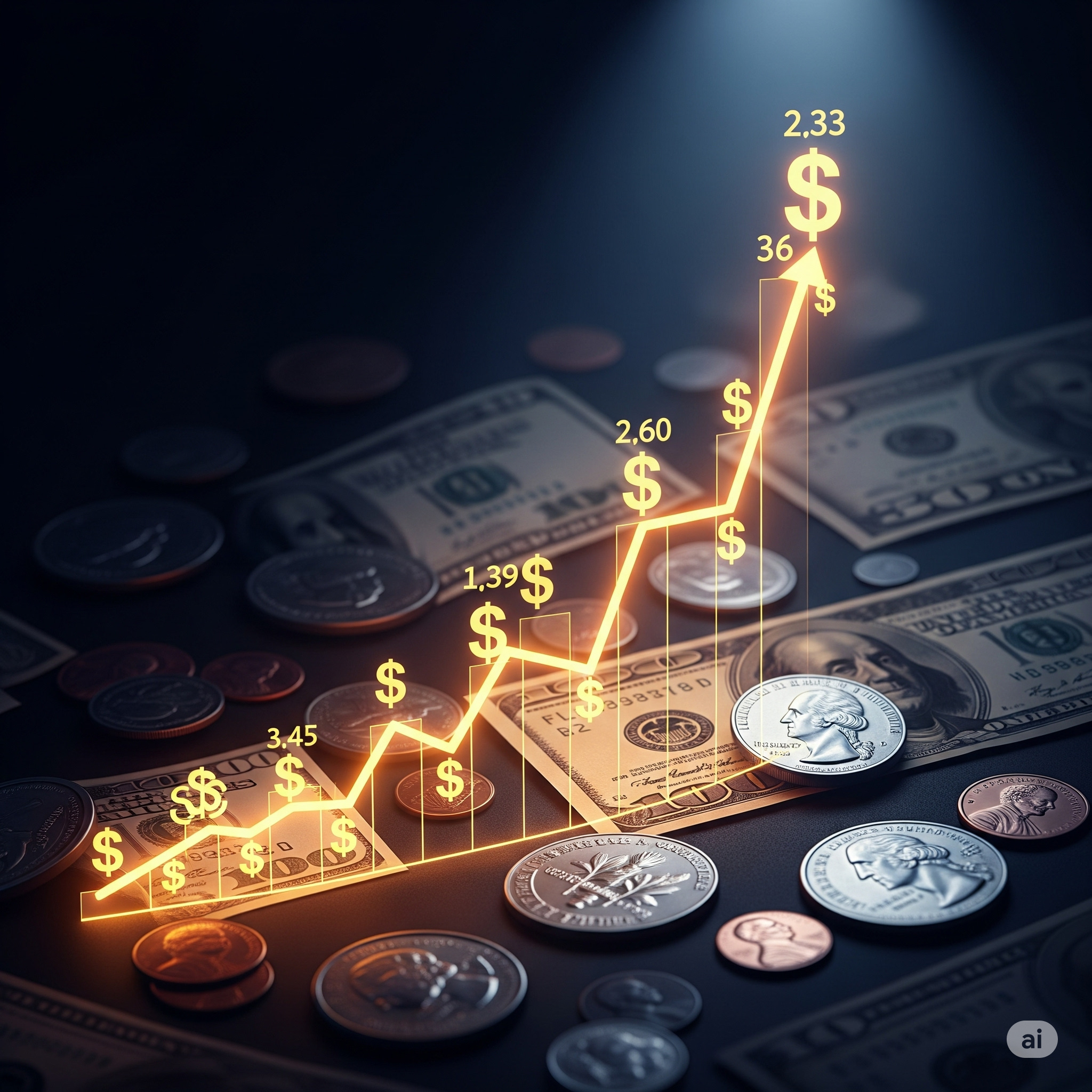Introduction
Money, in any form, is not merely a medium of exchange—it is also a matter of trust. For centuries, societies have struggled to decide what should serve as “money”: gold, silver, coins, or paper backed by governments. In the modern world, no currency has held greater power, acceptance, and trust than the United States Dollar (USD). From being a national currency of a newly independent country in the late 18th century, the U.S. dollar has become the world’s primary reserve currency, dominating global trade, finance, and even geopolitics.
The journey of the dollar is not only economic but also deeply political and strategic. It reflects how trust is created—through economic strength, global influence, stability, and the ability to enforce commitments. But is the trust in the dollar permanent? Or is it being challenged by alternatives like the Euro, Chinese Yuan, or potential digital currencies? To answer these questions, one must understand the history, rise, consolidation, and possible future of the American dollar in the international market.
Origins of the U.S. Dollar
Early Background
- The term “dollar” comes from the Spanish dollar (pieces of eight), which circulated widely in the Americas during the colonial era.
- After independence, the Coinage Act of 1792 established the U.S. dollar as the standard unit of money, pegged to both gold and silver, creating the first official American monetary system.
Establishment of Trust at Home
In the early years, America struggled with different currencies, state banknotes, and lack of a unified financial system. The creation of the First Bank of the United States (1791) and later the Federal Reserve System (1913) laid the foundation for stability. The U.S. dollar became a reliable national currency before it entered the global stage.
The Rise of the Dollar on the World Stage
World War I: Dollar as a Creditor’s Currency
Before World War I, the British Pound Sterling was the dominant global currency. However, the war devastated European economies, while the U.S. became a major creditor and supplier of goods. By 1914, New York was emerging as a financial hub, and the dollar began to be used in international loans and trade settlements.
The Great Depression & Gold Standard
In 1933, President Franklin D. Roosevelt took the U.S. off the domestic gold standard, but internationally the dollar remained tied to gold. The Gold Reserve Act of 1934 further consolidated gold under U.S. control, giving Washington unmatched influence in global monetary affairs.
Bretton Woods System: Institutionalizing Trust (1944)
The turning point came in July 1944, when world leaders gathered at Bretton Woods, New Hampshire to design the post-war financial order. The U.S., having the largest gold reserves and a strong economy, positioned the dollar at the center.
Key Features of Bretton Woods:
- The U.S. dollar was pegged to gold at $35 per ounce.
- Other currencies were pegged to the U.S. dollar.
- Institutions like the International Monetary Fund (IMF) and World Bank were created to stabilize the system.
This arrangement meant that trust in global money was essentially trust in the U.S. dollar.
Collapse of Bretton Woods & the Fiat Dollar Era (1971)
Nixon Shock
In 1971, President Richard Nixon announced the suspension of the dollar’s convertibility into gold, ending the Bretton Woods system. The dollar became a fiat currency, backed not by gold but by the U.S. government’s credibility, economic power, and political stability.
Why Trust Continued
Despite losing its gold backing, countries continued to hold dollars because:
- The U.S. economy was still the largest in the world.
- U.S. Treasury bonds were considered safe investments.
- The American military and political dominance reinforced confidence.
Thus, trust shifted from gold to the American state itself.
The Petro-Dollar System (1974 Onwards)
In the 1970s, the U.S. struck a deal with Saudi Arabia and OPEC nations: oil would be priced and traded in U.S. dollars. This petrodollar system ensured that every country needed dollars to buy oil, embedding the currency deeply in world trade.
- The U.S. provided military and political support to oil-rich nations.
- In return, oil transactions were settled in dollars, creating massive global demand.
This was a crucial moment when trust in the dollar became tied to energy security.
Factors That Sustained Dollar Trust
The dollar’s dominance is not just economic; it’s also psychological and strategic. Trust in the dollar comes from several aspects:
1. Economic Strength
- The U.S. economy accounts for nearly a quarter of global GDP.
- Stable inflation, advanced markets, and innovation boost credibility.
2. Institutional Stability
- Institutions like the Federal Reserve, IMF, and World Bank reinforce the dollar’s role.
- U.S. Treasury bonds act as the world’s safest asset.
3. Military and Political Power
- The U.S. Navy secures global trade routes.
- U.S. influence in international organizations keeps the dollar central.
4. Network Effect
- Since everyone uses dollars, it becomes costly for countries to shift away.
- Global trade invoicing (almost 60% in dollars) strengthens its cycle of dominance.
Criticism and Challenges to Dollar Dominance
While trusted, the dollar also faces criticism:
Dependence and Vulnerability
- Dollar dependence makes countries vulnerable to U.S. sanctions.
- Nations like Iran, Russia, and Venezuela have been cut off from the dollar system.
U.S. Debt and Inflation
- America’s rising national debt (over $34 trillion in 2025) questions long-term sustainability.
- Excessive printing of money risks inflation and trust erosion.
Rivals to the Dollar
- Euro: Seen as a strong alternative in Europe, but weaker global reach.
- Chinese Yuan (Renminbi): China is pushing for greater international use, supported by initiatives like the Belt and Road.
- BRICS Common Currency: Proposed to reduce dollar dependency.
- Cryptocurrencies and Central Bank Digital Currencies (CBDCs): Could decentralize trust in money.
The Future of Dollar Trust: Continuity or Decline?
Why Dollar May Continue to Dominate
- Deep Financial Markets – U.S. bond markets are unmatched.
- Political Alliances – U.S. global network secures trade and financial flows.
- Institutional Trust – Even critics admit the U.S. legal system is more reliable than many alternatives.
Why Dollar’s Role May Decline
- Multipolar World – As power shifts to Asia, reliance on the dollar could weaken.
- Digital Disruption – CBDCs and blockchain-based payments may reduce dollar monopoly.
- Debt Burden – If U.S. debt undermines investor confidence, alternatives may rise.
Is Dollar’s Dominance a Matter of Trust?
The answer is yes, but with conditions. Trust is not absolute; it is built on perceptions of safety, stability, and credibility. The U.S. dollar has created trust because of:
- Historical institutions like Bretton Woods.
- Strategic deals like the petrodollar.
- The credibility of U.S. governance and economy.
However, trust can weaken if America fails to maintain financial discipline, political stability, or if global alternatives become more appealing.
Conclusion
The story of the U.S. dollar is the story of how trust shapes money. From its humble beginnings in 1792 to its role as the world’s reserve currency, the dollar’s power comes not just from economics but also from psychology, geopolitics, and strategy.
- Historically, trust was backed by gold (Bretton Woods).
- After 1971, trust shifted to the U.S. state, economy, and military might.
- Today, trust is reinforced by trade, technology, and institutional influence.
- Tomorrow, this trust may face new tests—from digital money, multipolar geopolitics, or America’s own economic imbalances.
Ultimately, the dollar is powerful because the world believes in it. If that belief falters, the foundations of global finance may shift. Until then, the U.S. dollar remains the world’s most trusted currency—a symbol of how deeply economics and trust are intertwined.




